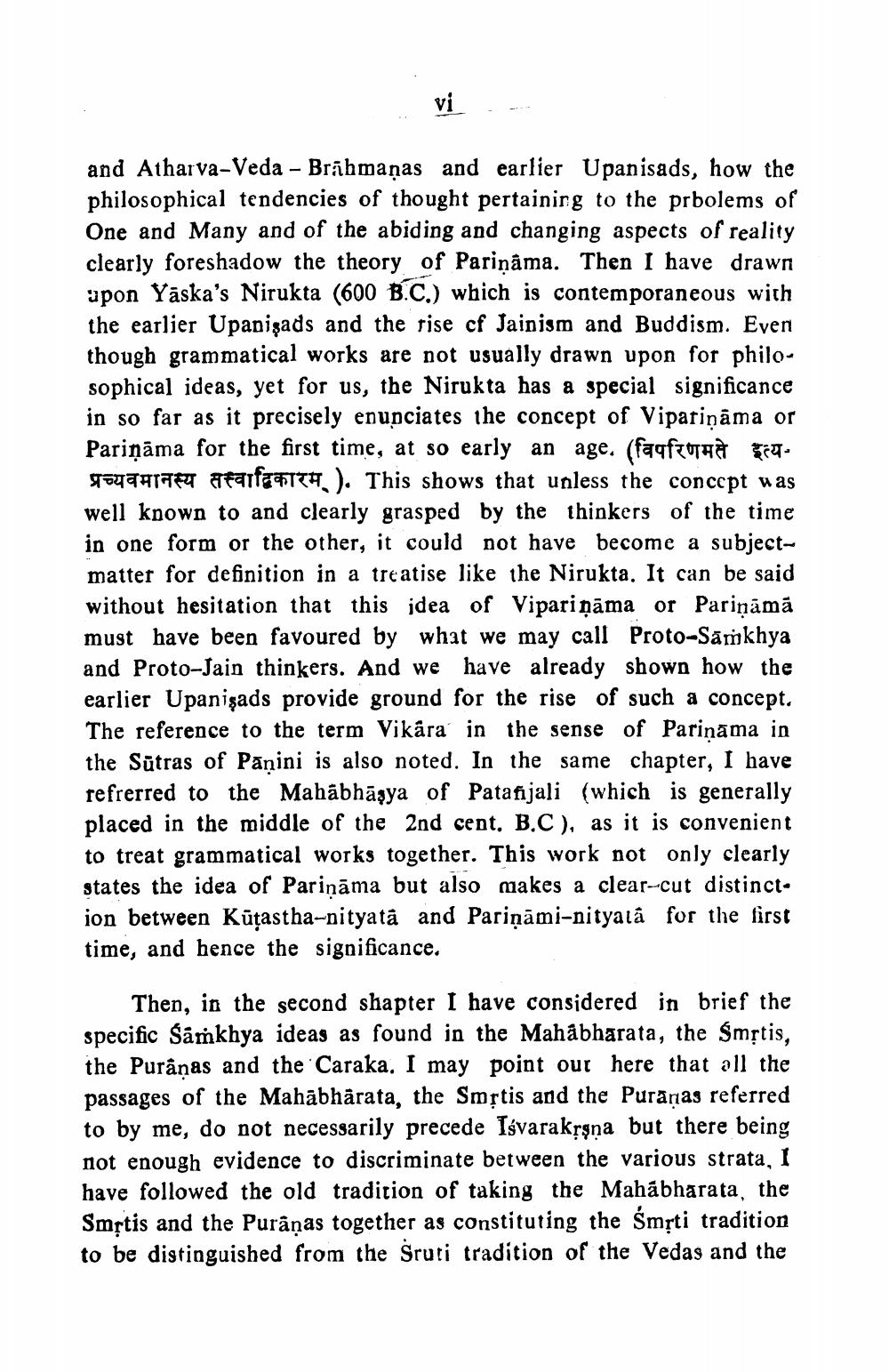Book Title: Theories Of Parinama Author(s): Indukala H Jhaveri Publisher: Gujarat University View full book textPage 8
________________ vi and Atharva-Veda – Brāhmaṇas and earlier Upanisads, how the philosophical tendencies of thought pertaining to the prbolems of One and Many and of the abiding and changing aspects of reality clearly foreshadow the theory of Pariņāma. Then I have drawn apon Yaska's Nirukta (600 B.C.) which is contemporaneous with the earlier Upanişads and the rise cf Jainism and Buddism. Even though grammatical works are not usually drawn upon for philosophical ideas, yet for us, the Nirukta has a special significance in so far as it precisely enunciates the concept of Vipatiņāma or Pariņāma for the first time, at so early an age. (faqftohet . $1847A1 ataifa70#). This shows that unless the concept was well known to and clearly grasped by the thinkers of the time in one form or the other, it could not have become a subjectmatter for definition in a treatise like the Nirukta. It can be said without hesitation that this idea of Vipariņāma or Parināmā must have been favoured by what we may call Proto-Samkhya and Proto-Jain thinkers. And we have already shown how the earlier Upanişads provide ground for the rise of such a concept. The reference to the term Vikára in the sense of Parināma in the Sūtras of Pāṇini is also noted. In the same chapter, I have refrerred to the Mahābhāşya of Patafijali (which is generally placed in the middle of the 2nd cent. B.C), as it is convenient to treat grammatical works together. This work not only clearly states the idea of Pariņāma but also makes a clear-cut distinct. ion between Kūțastha-nityata and Pariņāmi-nityalâ for the first time, and hence the significance. Then, in the second shapter I have considered in brief the specific Samkhya ideas as found in the Mahabharata, the Smộtis, the Puranas and the Caraka. I may point our here that all the passages of the Mahabharata, the Smộtis and the Purāṇas referred to by me, do not necessarily precede Isvarakrạna but there being not enough evidence to discriminate between the various strata, I have followed the old tradition of taking the Mahabharata, the Smộtis and the Puranas together as constituting the Śmrti tradition to be distinguished from the Sruti tradition of the Vedas and thePage Navigation
1 ... 6 7 8 9 10 11 12 13 14 15 16 17 18 19 20 21 22 23 24 25 26 27 28 29 30 31 32 33 34 35 36 37 38 39 40 41 42 43 44 45 46 47 48 49 50 51 52 53 54 55 56 57 58 59 60 61 62 63 64 65 66 67 68 69 70 71 72 73 74 75 76 77 78 79 80 81 82 ... 208
